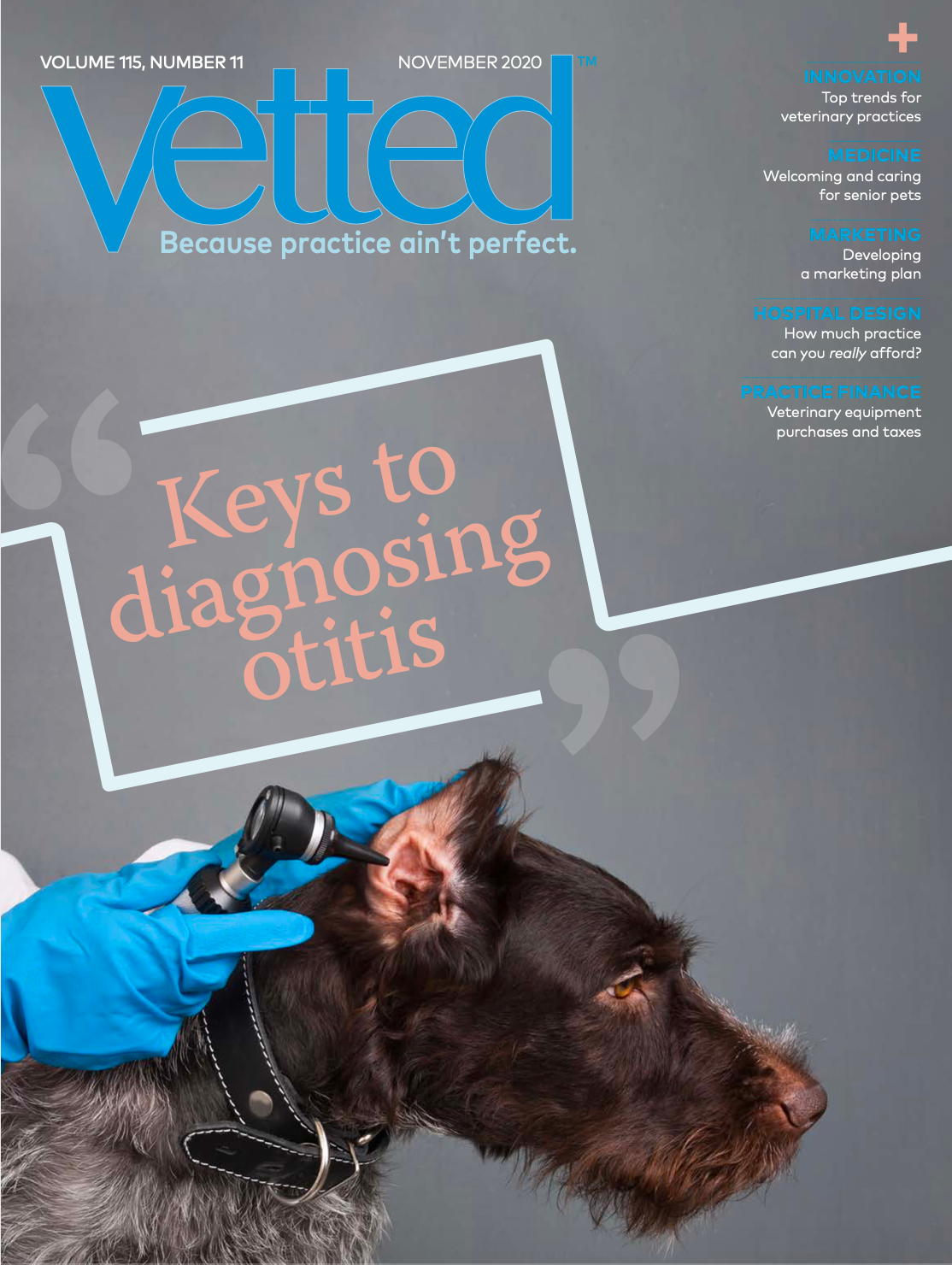“What if 2020 was the moment we have all been waiting for?” This is the question Bash Halow, BA, CVPM, LVT, posed to attendees at the inaugural Fetch dvm360® virtual conference. “What if it is a moment to clear the playing field and change the game entirely?”
Halow, owner of Halow Consulting in New York and member of the Editorial Advisory Board for dvm360®, said the uncertainty of 2020 could benefit local veterinary hospitals. “Because we run small businesses and have small teams that are intelligent and engaged, we can be more nimble to the constant changes we are going to see over the next couple of months,” Halow said. “What if this is a recipe for us to come out on top?”
Halow encouraged attendees to consider how the coronavirus disease 2019 (COVID-19) pandemic may affect their hospitals going forward. “COVID-19 and its challenges don’t have to be hobbling for us,” he said. Halow shared his thoughts on the top trends for 2021.
Telemedicine
“I was not too keen on telemedicine until 3 months ago,” Halow said. But the pandemic—and participating in virtual visits with his own medical providers—reshaped his opinion. Practice owners need to consider that clients now expect telemedicine as an option. Ignoring this could prove detrimental to future success (see “Bonus tip: A necessity, not a trend”).
“Stop thinking of telemedicine as being in lieu of a physical exam,” he said. “You are not going to get the same information from a telemedicine consult that you would from a physical exam, but there are still a lot of things telemedicine can do.”
- Offer new insight. Being able to view how a patient behaves in its home can provide unprecedented insight. For example, if a feline patient is exhibiting behavioral issues, a virtual visit allows the veterinarian to see where the cat eats and sleeps, where the litter box is located, and the overall condition of the home. These details can provide diagnostic clues not available during an in-office examination.
- Streamline data gathering. When a physical examination is necessary, Halow said telemedicine can assist in pre-appointment triage. Use the virtual setting to collect the patient’s medical history and learn more about current concerns. This is an opportunity, he added, to leverage team members who may be immunocompromised or not comfortable working in an office setting, while making better use of the veterinarian’s time.
- Save canceled appointments. When a client calls to cancel an upcoming appointment, suggest they turn it into a telemedicine consult instead. The veterinarian may still interact with the client and learn about the patient, Halow said. Then, based on what they hear, they may develop a plan. “More likely, what they’ll do instead of concluding the service then, the plan will include a visit with follow-up diagnostics where the physical exam can be conducted.”
How should hospitals charge for virtual consultations? Halow is confident practice owners can determine this once they establish that they can comfortably provide telemedicine. Clients expect to be charged for telemedicine visits because it is a use of the veterinarian’s time. “This meeting would be a great beginning to additional diagnostics,” he said. “And it would be a middle ground to find out how the patient is doing.”
Two-way text communication
“Two-way texting, especially in the age of social distancing and curbside service, allows your entire hospital to engage in 2-way dialogue with your clients via text messages in real-time,” Halow said, calling the service essential for hospitals. Not only do these programs let the client guide the service experience via their smartphones, but the providers (eg, VitusVet, Weave, Vet2Pet, PetDesk, InTouch Communications) supply additional resources that practices can pass on to clients, including bill paying, accessing medical records, and viewing diagnostic results.
“Think of these two-way texting tools as a way to take all of the things you are already doing and putting it through one platform,” he said.
Online Scheduling
“Staff shortages are not going away anytime soon, so onboard technology that shoulders some of your team members’ most time-consuming tasks,” said Halow. “Online scheduling has finally arrived and it’s so much better than the old way of merely requesting a time slot, with platforms that allow clients to book their own appointments directly in real time. The service has been shown to decrease appointment phone traffic by 60% and gives clients the immediacy and convenience they’ve come to expect. Now you don’t have to fret about another client care representative shortage,” he said. “You can work with the team members that you have, improve service, and take the payroll savings to the bank.”
Bonus tip: A necessity, not a trend
Practice owners must acknowledge that clients have become accustomed to a virtual lifestyle.
“If before [the pandemic] your argument was that you didn’t have to worry about your clients’ online activity because your area was too rural or your clients were too senior, that has gone out the window,” Halow said. “We’ve all been introduced to the idea that shopping online is convenient, affordable, and safe. We are not pulling back from that.”
If a veterinary hospital does not have a clear virtual pathway to clients through an online portal, changes are necessary. “You are going to need a significant online presence if you want to be relevant to the kind of clientele that is going to support your business in the long term,” he said.
Sense of community
“Clients are bigger advocates for their communities and locally sourced products and services now than they ever were,” Halow said, adding that hospitals should use this to their advantage.
Practices have been told they need to match prices for big box and online stores, but it has resulted in offices that are drowning in inventory. There is such a thing as too many options.
“I want you to distinguish yourself in these 2 ways,” he said. When clients talk about the many choices available to them for their pets, veterinary practices should say, “Yes, we’ve already seen all of the choices that are out there and we’ve picked the one that is right for you and your pet.” Be confident that your office has the item that the specific pet needs. “That should be the pitch you make to them,” he said.
Halow said it is also advantageous to remind clients that when they shop locally, the money they spend at your practice is reinvested into the community. “If we are looking for people’s help to lift us out of this economic recession, it will happen because all of us help our individual communities,” he said. “Make the case for that.”
Supporting local businesses is a growing nationwide trend, Halow said. “Know that your message is likely to fall on very receptive ears.”
Financial assistance for clients
Looking ahead, Halow predicts that more and more clients will need financial assistance to provide the lifesaving veterinary care their pets need. Lines of credit for the veterinary industry have been a game-changer, he said, noting that CareCredit and VetBilling.com are among the most popular.
Halow said some pet insurance companies, such as Nationwide, now cover the cost of virtual visits as part of their coverage plans. “One of the ways to incentivize clients to acquire pet insurance is to say that you offer virtual visits and that the insurance company covers the cost of those visits.” It’s a win-win for all parties, he said.
Above all else, Halow said, practices need to consider what pet owners want. “Your job should be listening to their needs and finding a way to offer your services in such a way to meet those needs.”
Amanda Carrozza is a freelance writer and editor in New Jersey.

